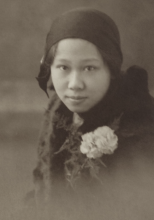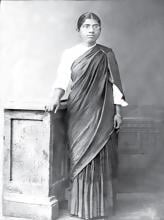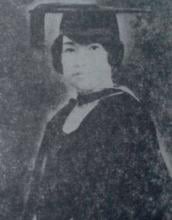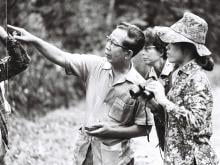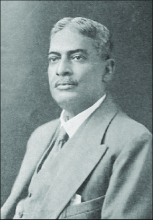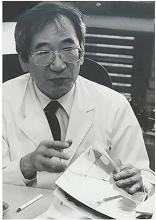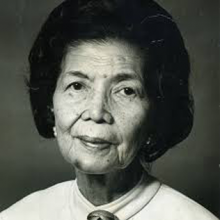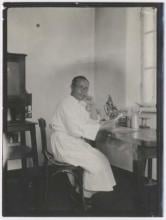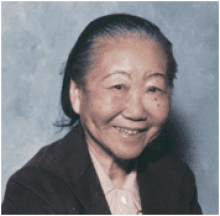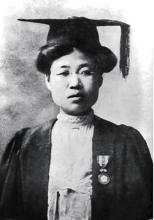Medicine
News

27 Jul 2005
In a special Outlook on India in this week's Nature, K.S. Jayaraman investigates how the industry will respond to new guidelines from WTO and what it can do to tackle the problems it faces.

27 Jul 2005
A commonly used drug could have the power to extinguish the trauma associated with horrific memories

27 Jul 2005
Humans can learn without remembering; How the Earth's insides stay warm; Genes responsible for breast cancer metastasis identified; The age of the Amazon's breath; Hybridization throws up new animal species; Parasites give caterpillars a taste for revenge

24 Jul 2005
Biology: A structure of antidepressants' binding sites; Botany: A twist on corn-on-the-cob; Fast diodes speed up organic electronics; Small doses go a long way; Interfering with HIV.

22 Jul 2005
A report of a volunteer study in Bangladeshi adults of a candidate oral cholera vaccine, Peru-15, has been shown to be safe and effective.

21 Jul 2005
It is the most frequent bacterial cause of diarrhoea in children and adults living in the developing world and also the most common cause of traveller's diarrhea.

19 Jul 2005
GPS data confirm huge dimension of Boxing Day quake; Genes shine light on mosquito bacterial infections; Mutants arise from Sleeping Beauty; Birds' ancestors showed modern breathing mode; Three's a crowd; Raptors fly the flag for biodiversity

19 Jul 2005
SARS receptor identified in vivo; Insights into the carbon trade; Nitric oxide targets cysteine; Understanding a side effect of TZDs; TACI is mutant in common variable immunodeficiency and IgA deficiency; Genetic influences on anxiety.

19 Jul 2005
Dry dust on Mars; Missions to Mars part 2; Cigarette brain boost inseparable from addiction; An amplified difference in melanoma cells; What the retina doesn't tell the brain; Slow breeders need more space; Sound analysis reveals didgeridoo secrets

17 Jul 2005
The Child Health and Nutrition Research Initiative (CHNRI), announces a Request for Proposals (RFP). The deadline for submitting proposals is 5 pm Bangladesh time July 31, 2005
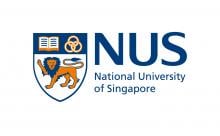
12 Jul 2005
Researchers in NUS discover how nitric oxide protects brain cells from dying

12 Jul 2005
1) An outbreak of the deadly H5N1 bird flu virus has been spotted in wild migratory geese in western China; (2) Researchers identify a crucial receptor that the Nipah virus relies on to infect human cells.

12 Jul 2005
Two recent innovations by Nanyang Technological University (NTU) look set to revolutionize biomedical treatment
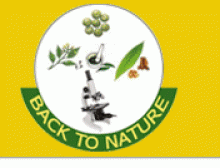
06 Jul 2005
This page is a simple catalogue of 124 medicinal herbs frequently used by CAM (Complementary and Alternative Medicine). This section is aimed at helping to give an idea regarding the herbs used for medicinal purpose.

22 Jun 2005
The pandemic strains of V. parahaemolyticus have been isolated for the first time in sub-Saharan Africa.

13 Jun 2005
21st Century Bioscience Research Institute

13 Jun 2005
The Institute of Integrated Medical Research on Shinanomachi Campus
12 Jun 2005
Antibiotic resistance is a rising concern. This research compares two different brands of vaccine, ie the investigational vaccine and an already marketed vaccine with brand name 'X', in healthy subjects aged between 10 and 25 years
12 Jun 2005
Open reading frame yjbI of Bacillus Subtilis codes for truncated hemoglobin
12 Jun 2005
A study on 60 rural children for Hepatitis-B vaccine, Revac-B showed it is highly immunogenic and well tolerated.

11 Jun 2005
Biochemistry: Finding nitric oxide in an oxygen haystack
Drug discovery: Keeping iron away from bacteria
Microbiology: Structure of the quorum-sensing pheromone ComX revealed

11 Jun 2005
Press release for 19 May issue of Nature. Vol 435, no. 7040

10 Jun 2005
Tuberculosis detection in the future will become faster, cheaper and easier using an innovative device developed by Nanyang Technological University (NTU).

09 Jun 2005
A new study in Nature Methods expands on a powerful, previously described technique for the targeted deactivation of specific protein kinases. These findings promise to considerably simplify the study of this very important class of proteins.

07 Jun 2005
The team has identified foetal nucleated "erythrocytes" (bone marrow cells which later become red blood cells) as ideal for non-invasive prenatal diagnosis. These cells are extracted from the maternal blood.

07 Jun 2005
Nature and the Nature research journals press release for papers that go live on Sunday 5 June 2005

07 Jun 2005
Press release for Nature 2 June issue. Vol 435, no 7042

07 Jun 2005
Press release for 26 May issue of Nature. Vol 435, no. 7041
Researchers
Sorry, no researchers coming up for this topic.
- « first
- ‹ previous
- 1
- 2
- 3
- 4
Giants in history
Michiaki Takahashi (17 February 1928 – 16 December 2013) was a Japanese virologist who developed the first chickenpox vaccine.
Irene Ayako Uchida’s (8 April 1917 – 30 July 2013) strides to understand genetic diseases such as Down syndrome paved the way for early screening of chromosomal abnormalities in foetuses.
Baron Kitasato Shibasaburo (29 January 1856 – 13 June 1931) was a Japanese physician and bacteriologist whose work led to a new understanding of preventing and treating tetanus, diphtheria and anthrax.
Maggie Lim (5 January 1913 – November 1995) was a Singaporean physician who promoted family planning and expanded the access to clinics to improve the quality of life for mothers and children in Singapore’s early days.
By isolating soil microorganisms and studying the compounds they produce, Satoshi Omura (born 1935) discovered almost 500 organic compounds with unique properties that were produced by these microorganisms, including many new antibiotics.
The founder of the Adyar Cancer Institute in India, Muthulakshmi Reddy (30 July 1886 – 22 July 1968), fought to uplift women and girls from impoverished situations.
Chinese-American virologist and molecular biologist Flossie Wong-Staal (27 August 1946 – 8 July 2020) was the first scientist to clone HIV and determine the function of its genes.
Maharani Chakravorty (1937 – 2015) was one of India’s earliest molecular biologists whose research paved the way for advances in the treatment of bacterial and viral infections.
Archana Sharma (16 February 1932 - 14 January 2008) conducted research into plant and human genetics that expanded the understanding of both botany and human health. In relation to botany, she uncovered the means by which asexually-reproducing plants evolve into new species.
The first Thai woman to receive a degree in medicine, Margaret Lin Xavier (29 May 1898 – 6 December 1932), is best remembered for her compassion towards her less privileged patients.
In 1915, pathologist Katsusaburo Yamagiwa and his research assistant Koichi Ichikawa became the first to prove that chronic exposure to chemicals can cause cancer.
In 1915, Koichi Ichikawa along with pathologist Katsusaburo Yamagiwa became the first to prove that chronic exposure to chemicals can cause cancer.
Husband and wife team, Kimishige (3 December 1925 – 6 July 2018) and Teruko Ishizaka (28 September 1926 – 4 June 2019) discovered the antibody class Immunoglobulin E (IgE) that triggers allergic reactions. They also discovered that IgE antibodies attach to white blood cells, known as mast cells, releasing histamine, which causes allergic reactions.
Husband and wife team, Kimishige (3 December 1925 – 6 July 2018) and Teruko Ishizaka (28 September 1926 – 4 June 2019) discovered the antibody class Immunoglobulin E (IgE) that triggers allergic reactions. They also discovered that IgE antibodies attach to white blood cells, known as mast cells, releasing histamine, which causes allergic reactions.
Japanese chemist Takamine Jokichi (3 November 1854 – 22 July 1922) founded the Tokyo Artificial Fertilizer Company, where he isolated a starch-digesting enzyme (named takadiastase) from the fungus Aspergillus oryzae.
Ground-breaking cancer researcher Kamal Jayasing Ranadive (8 November 1917 – 11 April 2001) advanced the understanding of the causes of leukaemia, breast cancer and oesophageal cancer through the use of animal models. She was also among the first to recognise how susceptibility to cancer is linked to tumour-causing interactions between hormones and viruses.
The research of Filipino pharmaceutical chemist Luz Oliveros-Belardo (3 November 1906 – 12 December 1999) focussed on essential oils and other chemicals derived from native Philippine plants.
Thai physician and conservationist Boonsong Lekagul (1907 – 1992) made major contributions to the preservation of his country’s wildlife.
Indian scientist and physician Upendranath Brahmachari (19 December 1873–6 February 1946) is best known for creating a drug called Urea Stibamine, used to safely and reliably treat visceral leishmaniasis (or Kala-azar), a severe infection caused by the Leishmania parasite.
Filipino chemist and pharmacist Manuel A. Zamora (29 March 1870 – 9 July 1929) is best remembered for his discovery of the tiki-tiki formula to combat beriberi, a disease caused by Vitamin B1 deficiency.
Korean parasitologist Seung-Yull Cho (16 November 1943 – 27 January 2019) is remembered largely for his pioneering works to control infections caused by helminthic parasites and his contribution to journal publishing.
Fe Villanueva del Mundo (27 November 1911 – 6 August 2011) was a Filipina paediatrician who founded the Philippines’ first paediatric hospital.
After witnessing death and suffering as a youth in his home village during World War II, Nguyễn Tài Thu (6 April 1931 – 14 February 2021) set his sights on alleviating pain by becoming a doctor. After studying Traditional Chinese Medicine in China in the 1950s, Thu returned to Vietnam to serve in military hospitals. Eventually, he became the country’s foremost practitioner of acupuncture, a technique he first learned by inserting needles into himself.
Minoru Shirota (April 23, 1899 – March 10, 1982) was a Japanese microbiologist who invented the popular fermented drink Yakult.
Wu Lien-teh (10 March 1879 – 21 January 1960) was a Malaysian-born doctor who invented a mask that effectively suppressed disease transmission. Winning the prestigious Queen’s Scholarship enabled Wu to become the first Chinese student to study medicine at the University of Cambridge.
David T. Wong (born 1936) is a Hong Kong-born American neuroscientist who is best known for discovering the antidepressant drug fluoxetine, better known as Prozac.
Indian organic chemist Asima Chatterjee (1917 to 2006) studied the medicinal properties of plant products, especially compounds known as vinca alkaloids.
Chika Kuroda (24 March 1884 – 8 November 1968) was a Japanese chemist whose research focussed on the structures of natural pigments.
Umetaro Suzuki (7 April 1874 – 20 September 1943) was a Japanese scientist best remembered for his research on beriberi, a disease caused by vitamin B1 deficiency, characterized by limb stiffness, paralysis and pain.
Salimuzzaman Siddiqui (19 October 1897 – 14 April 1994) was an artist and chemist from Pakistan whose research focused on natural products from plants.
Barry Paw (29 August 1962 – 28 December 2017) was a biologist and oncologist who discovered several novel genes and their functions in red blood cells.
Syed Qasim Mehdi (13 February 1941 – 28 September 2016) was a Pakistani molecular biologist who was a founding member of the Human Genome Diversity Project (HGDP), which assessed human diversity by studying human migration, mutation rates, relationships between different populations, genes involved in height and selective pressure.
Tsai-Fan Yu (1911 – 2 March 2007) was a Chinese-American physician and researcher who was the first female full professor at Mount Sinai School of Medicine. She discovered that gout, a condition characterized by the painful inflammation of joints, was caused by elevated levels of uric acid in the bloodstream.
Min Chueh Chang (10 October 1908 – 5 June 1991) was a Chinese-American biologist who studied fertilization in mammalian reproduction.
A Japanese surgeon, Tetsuzo Akutsu (20 August 1922 – 9 August 2007) built the first artificial heart capable of keeping an animal alive.
Ogino Ginko (3 March 1851 – 23 June 1913) was the first registered female doctor to practise modern medicine in Japan.
Esther Park (1877-1910), born Kim Jeom-dong, was the first female Korean physician to practise modern medicine in Korea and trained the first generation of Korean female doctors.





